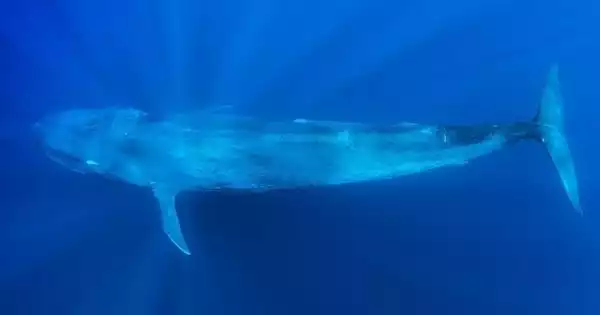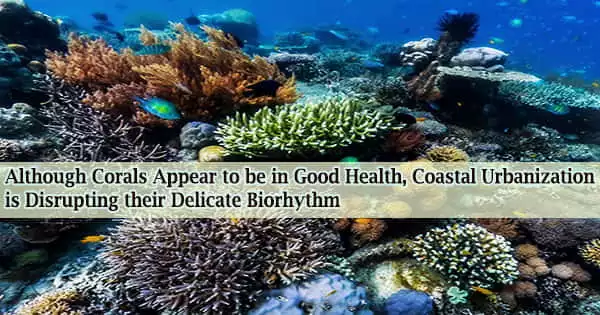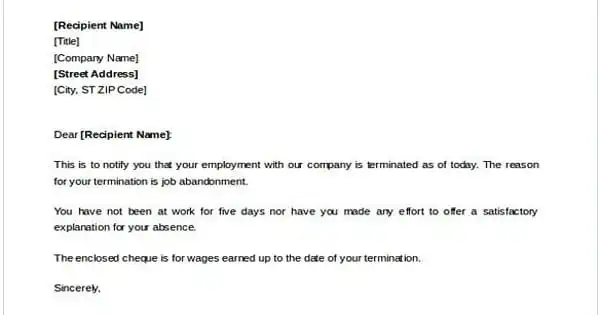Researchers have developed a method for forecasting where a distinct population of New Zealand blue whales is most likely to occur up to three weeks in advance. This forecasting ability is a significant step forward in conservation management for a species whose habitat overlaps with a wide range of commercial activities, including oil and gas exploration and extraction, vessel traffic, fisheries, and possible seabed mining.
Oregon State University researchers have developed a method for predicting the locations were a distinct population of New Zealand blue whales is most likely to occur up to three weeks in advance.
“These forecasts will give managers a really good ability to predict where whales are likely to be and then make decisions about what activities should or should not happen in those areas,” said study co-author Leigh Torres, an associate professor, and director of OSU’s Marine Mammal Institute’s Geospatial Ecology of Marine Megafauna Laboratory. “By making proactive rather than reactive decisions, managers can reduce the burden on policymakers and commercial users.”
These forecasts will give managers a really good ability to predict where whales are likely to be and then make decisions about what activities should or should not happen in those areas.
Leigh Torres.
Dawn Barlow, a doctoral student in Torres’ lab, is the study’s lead author. The study’s findings were published in the Journal of Applied Ecology today. The New Zealand Department of Conservation helped fund some of the research.
Torres, Barlow, and colleagues recently discovered that New Zealand blue whales are genetically distinct from other blue whale populations and live year-round in the South Taranaki Bight between New Zealand’s North and South Islands. The population numbers around 700 whales, and the South Taranaki Bight is their only documented foraging ground.
“Because the blue whales’ foraging ground overlaps with industry in this area, there was a clear need for some kind of management from environmental regulators,” Torres explained. “However, whales aren’t always in the same places or at the same times as commercial activities. The more we know about how whales distribute themselves, the better we can inform management about where and when blue whale habitat exists.”

Initially, there was talk of creating a marine protected area – essentially, an area on a map that denotes where certain activities are permitted or prohibited – in order to protect animals within the boundary, according to Torres.
This type of marine protected area is thought to be a static management technique. Static management, on the other hand, may not be as effective for animals that are mobile and spend time in a variety of locations, such as whales. Dynamic management, which is responsive to changing conditions and animal locations, is an alternative strategy.
“One of the big appeals of dynamic management is that, when compared to a static boundary, it has the potential to really minimize the burden on other ocean users,” Barlow said. “Sometimes whale habitat overlaps with human uses, and other times it does not. When it doesn’t, other ocean users shouldn’t have to pay the price.”
Previous research by Barlow and Torres identified ocean patterns that predicted where New Zealand blue whales and the krill they eat would be. Their most recent study expands on those findings.
They collected data for a decade on a wide range of weather and ocean conditions, including upwelling dynamics and marine heatwaves, which can influence krill availability, particularly during the spring and summer months when blue whales are most likely to be feeding in the area. The researchers used this information to create a forecasting model that predicts where blue whales will be able to forage up to three weeks in advance.
“These forecasts are possible due to the knowledge we’ve gained about this population and their ecology in this region over our years of studying these whales,” said Barlow. “We know that whales rely on this area for food, and we know what environmental conditions promote good foraging. Wind conditions influence ocean conditions, which influence where the prey is found.”
Understanding the lag time between changes in ocean dynamics and the impact on foraging conditions for whales, she says, is critical to developing a model that can make reliable forecasts. Quantifying the lag times was a previous step in creating these forecast models.
The researchers are now working on creating a desktop application for the forecasting model that conservation managers can use. Managers will be able to run the model and generate a map indicating the likelihood of whale presence based on the date and other parameters they specify.
“The forecasts are extremely accurate in predicting where suitable whale habitat will be found. It does not necessarily imply that you will find a whale there, as they are inherently scarce; some good habitat will always be unoccupied “Torres stated. “However, it is an extremely exciting tool that can allow managers and industry to plan ahead, allowing for both effective whale protection and a reduction in the burden on other ocean users. It’s a concept that can be expanded and applied in other areas as well.”
















